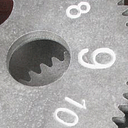Remote office work in the pandemic: document feeders, document scanners, and a few hacks for cheaper solutions for digitization
I am helping a lot of colleagues and small businesses around me through the pandemic, and that means making sure their workflows can continue even in times of lock-down. One thing that comes up very often is the need for a scanning solution that actually works and and is reasonably cheap. In this article i will demonstrate the problem there is with current (modern) hardware, how it became more expensive during the pandemic, and what we can do about it.
There are a few issues you will be facing should you want to make your office ready for digitization, and initially this will be mainly: cost. During the pandemic the prices for decent scanners such as the Fujitsu ScanSnap are skyrocketing, as everything related to remote work seems to see either shortages or an increase in price.
“everything related to remote work and digitization sees either shortages or an increase in price”
These price increases are mostly visible with document scanners, where the Fujitsu ScanSnap can go as high as whooping $600, just because it has an automatic document feeder.
So what is the solution here? What alternatives do we have to paying these insane prices we do not want to pay? Here are some suggested hacks and tweaks to get the same results essentially.
- Buy scanners and aftermarket devices which work with vuescan (Mac OS X, Windows and Linux support)
- Use AIO (All-in-One) printers as document scanners where the print unit is defective (you sometimes even can get those for free)
- Use your phone or cameras as scanners
Buy scanners and aftermarket devices which work with VueScan
I rarely do suggest non-open source software, but in this case i make an exception, just because vuescan really is an amazing piece of software. It essentially extends the shelf-life of thousands (if not million) scanners worldwide, by supporting all (and that also means vintage) scanners for Linux, Windows and Apple Mac OSX. Take macOS as example: Catalina rendered thousands of scanners that didn’t have 64-bit operating unable to be used on Apple Macs. This piece of software actually still supports those scanners.
By checking which scanners are supported with vuescan, you can essentially also buy older and second hand devices for Apple or Windows — and you don’t have to follow the document scanner panic.
Use AIO (All-in-One) printers as document scanners where the print unit is defective (you sometimes even can get those for free)
This is a more “hacky” solution, which can be the cheapest solution as well, if you are willing to dig through classifieds.
Inkjet printers these days are built around the fact that you need to buy more ink, so the units themselves are usually sold very cheaply. As these devices are usually sold for $1 on ebay if the print unit stops working, you can get an extremely cheap scanner for almost nothing. The New York Times in 2016 explained the printer market in the article “Why All Printers Suck (Even the Best Ones)” so we are going to make the world better here.
Step 1: dig through cheap $1 broken all-in-one printer listings on eBay
Step 2: if you are the “maker” type, you can separate the scanning unit from the printer, as outlined by hackaday.
Step 3: if it works for you, make sure to tell your friends and write reports online, as the planet needs less garbage, and you can make a difference by telling people that this works. Of course there is more things you can salvage from devices usually (here is a good video on what you can actually extract from printers and scanners), and there is another fantastic post from instructables about exactly the same thing.
Use your phone or cameras as scanners
Of course you can also use your existing phones and cameras as scanners. For Android, I can recommend the apps CleanSCAN as well as Open Note Scanner. Tons of other apps are existing as well, but these two are open source and reasonable.
If you are planning to preprocess you photos, take a look at Scantailor Advanced, which is available for Mac OS X, Windows and Linux.
Please follow opengears.medium.com and check twitter @audiores and let me know in the comments if you have any other feedback or additions to this write-up. Please support me by ordering your Trezor 2FA and cryptographic assistant via this link.
